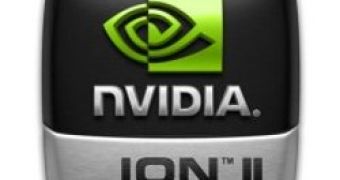Not long after NVIDIA revealed the main features of the ION 2 platform, which is set to outmatch even Intel's Pine Trail mobile platform, the latter stepped up to point out those features that may make the former's technology less appealing to netbook buyers. While NVIDIA believes that consumers will be willing to pay for the extra functionality, Intel retorted by saying that there are other ways of running multimedia files, such as third-party decoder solutions. Intel also points out the superiority of Pine Trail when it comes to power efficiency.
“To run multimedia you don’t need a huge graphics chip. That’s what those third-party decoder solutions will show in the marketplace. […] In terms of usages, netbooks are not meant for gaming. You can run Internet games fine today with the existing solutions,” said Anil Nanduri, director of netbook marketing at Intel, in an interview with the Laptop Mag website.
NVIDIA may not have been necessarily wrong when it said that end-users would be willing to pay for the extra features boasted by ION. However, what the GPU manufacturer did not succeed in doing was to make the ION power efficient enough to provide a strong enough competition. For instance, the consumption of the GeForce 9400M chip is 18W, significantly more even than the combined power used by the Pine Trail's components (The Atom N450 processor along with Intel's NM10 I/O controller and Broadcom HD video decoder).
“There are much more innovative ways to get multimedia capabilities that will continue to provide lower power and longer battery life. We believe [NVIDIA ION] adds unnecessary additional cost and the other trade-offs make it less desirable,” stated Mr. Nanduri.
OEMS seem to have similar opinions, with NVIDIA's ION only scoring four nettop and four netbook design wins during the past year. This is mostly due to the fact that netbooks just aren't meant for multimedia and gaming, with consumers electing, when in need of performance, to buy notebooks instead. As such, Intel says that the ION's features (DirectX 10-compatible graphics, DDR3 memory and PCI Express 2.0 x16 support, among other things) will not exactly contribute to the platform's popularity, despite their charm.
In the end, it will be the market itself that decides just how well the two platforms will perform.

 14 DAY TRIAL //
14 DAY TRIAL //